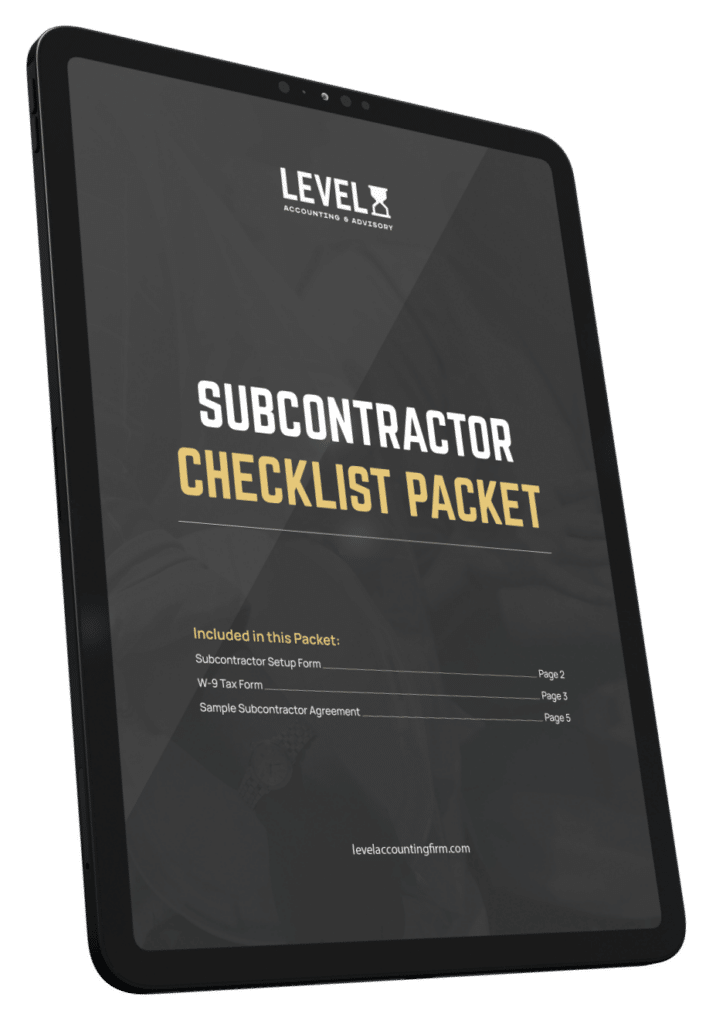If you’re a construction business owner or manager, you know that predicting the future is a critical part of making sound business decisions. Being able to accurately forecast upcoming trends, demand, and costs can mean the difference between success and failure.
Business forecasting is the practice of using historical data and other relevant information to estimate future performance. While this concept may sound dry and academic, it can be a powerful tool for optimizing your construction business. Accurate forecasting can help you make informed decisions, better allocate resources, and improve profitability.
If you’re new to forecasting or want to further familiarize yourself with this practice, this guide is for you. Today, we’ll explore the ins and outs of business forecasting and how it can be applied to your construction business. We’ll take a deep dive into forecasting techniques and models, discuss the benefits and challenges of forecasting in the construction industry, and offer best practices for implementing effective forecasting strategies.
Understanding Business Forecasting
Business forecasting is the process of estimating future performance based on historical data and other relevant information. This can involve analyzing trends, patterns, and other factors to develop a forecast that can guide decision-making.
There are two primary categories of business forecasting techniques: quantitative and qualitative. Quantitative forecasting involves using statistical methods to analyze historical data and predict future trends. Meanwhile, qualitative forecasting is based on expert opinions and judgment rather than data analysis.
Forecasting models are essential tools in business forecasting, and they can help predict future outcomes with a high degree of accuracy. These models can span from linear regression models to more complex algorithms that account for multiple variables.
Linear regression models are typically used when there is a linear relationship between two variables. This type of model is relatively easy to understand and implement but can be limited in its ability to account for complex relationships.
In contrast, more complex forecasting models, such as ARIMA (autoregressive integrated moving average) and neural networks, are designed to capture more complex relationships between variables. ARIMA models are used when there is a non-linear relationship between two or more variables, while neural networks are used to model highly complex relationships.
Regardless of the type of model used, accurate forecasting requires high-quality data and a thorough understanding of the underlying relationships between variables. The key to developing accurate forecasting models is to identify the most critical variables that are likely to impact future outcomes and to incorporate those variables into the model.
Applying Business Forecasting to Construction Businesses
In the construction industry, forecasting can be particularly valuable due to the long lead times and significant investments involved. By accurately predicting future demand, businesses can better allocate resources and reduce the risk of overinvestment or underinvestment.
Some areas where forecasting can be applied in the construction industry include demand for new projects, labor needs, and material costs. By analyzing past trends and other relevant information, businesses can develop accurate forecasts for these areas.
Steps in Implementing Business Forecasting
Implementing forecasting in a construction business can be a complex process, but breaking it into specific steps can help make it more manageable. The following are the steps that businesses can follow to implement forecasting successfully in their construction businesses:
1: Identify the Specific Areas that Require Forecasting
The first step in implementing forecasting is to identify the specific areas that require forecasting. This can include demand for new projects, labor needs, and material costs, among others. By identifying the specific areas that require forecasting, businesses can develop accurate forecasts that guide decision-making.
2: Collect Historical Data Related to the Identified Areas
Once the specific areas that require forecasting have been identified, businesses need to collect historical data related to those areas. This can involve analyzing past trends and other relevant information to develop accurate forecasts.
3: Analyze the Data to Develop Accurate Forecasts
After collecting the historical data, the next step is to analyze it to develop accurate forecasts. This can involve using statistical methods such as regression analysis or time-series analysis to identify patterns and trends in the data. Qualitative forecasting techniques such as expert opinion and judgment can also be used to supplement the quantitative data analysis.
4: Monitor and Adjust Forecasts Regularly
Developing accurate forecasts is not a one-time event; it requires regular monitoring and adjustments based on changes in market conditions or other relevant factors. This can involve revisiting the forecasts periodically and adjusting them based on changes in the market or other external factors.
5: Revisit the Forecasts Periodically
Finally, businesses must revisit the forecasts periodically to ensure they remain accurate and up-to-date. This can involve reviewing the data and assumptions underlying the forecasts and adjusting them as needed to reflect changes in the market or other relevant factors.
By following these steps, businesses can develop accurate forecasts that can guide decision-making and improve their overall performance. With careful planning and execution, businesses can successfully implement forecasting in their construction businesses and gain a competitive advantage in the industry.
Benefits of Business Forecasting in Construction
There are several benefits of using business forecasting in the construction industry. One significant benefit is that it can lead to better decision-making. By accurately predicting future demand and other factors, businesses can make informed decisions about where to invest resources.
Forecasting can also help businesses optimize resource planning. By accurately predicting future needs, businesses can better allocate resources such as labor and materials, reducing the risk of overinvestment or underinvestment.
Improved budget management is another potential benefit of business forecasting. By accurately predicting costs and revenues, businesses can develop more accurate budgets and reduce the risk of overspending.
Challenges and Risks in Business Forecasting for Construction Companies
The construction industry is faced with several notable challenges when forecasting. One significant roadblock is ensuring the accuracy and availability of data. Inaccurate or incomplete data can lead to inaccurate forecasts, which can negatively impact decision-making.
Limited resources can also pose a challenge in developing accurate forecasts. Forecasting can be time-consuming and resource-intensive, and smaller businesses may not have the resources to invest in developing accurate forecasts.
Changes in market conditions and regulations can also impact the accuracy of forecasts. Forecasting models that are based on historical data may not account for unexpected changes in market conditions, which can lead to inaccurate forecasts.
Over-reliance on forecasting models is another potential risk. Businesses must recognize that forecasting models are only as accurate as the data and assumptions they are based on. Leaning too heavily on these models can lead to a false sense of security, which can result in poor decision-making.
Best Practices for Effective Forecasting
To ensure effective business forecasting in the construction industry, there are several best practices businesses can follow. First, establish clear goals and objectives for the forecasting process. Doing so can help ensure that the forecasts are aligned with the holistic strategic direction of the business.
Regular review and monitoring of forecasting results are also important. Reviewing and monitoring can involve revisiting the forecasts periodically and adjusting them based on changes in market conditions or other relevant factors.
Data integrity and accuracy are critical to developing accurate forecasts. Businesses must verify that the data used in the forecasting process is accurate, complete, and up-to-date.
Lastly, establishing efficient and seamless collaboration and communication among stakeholders is also necessary. By involving key stakeholders in the forecasting process, businesses can ensure that the forecasts are aligned with the overall strategic direction of your company.
Get Help with Forecasting for Your Own Construction Business
Business forecasting is a valuable tool for any business, and it can be particularly beneficial in the construction industry. By accurately predicting future trends and other factors, businesses can make informed decisions, better allocate resources, and optimize profitability.
If you are looking to optimize the way that your business plans for the future, let our team at Stratlign assist you. With years of experience exclusively serving entrepreneurs in the construction and trades industries, we provide you with a full suite of financial management services to ensure your company remains financially healthy while you focus more on doing what you love during your business hours.
To learn more about how we can help you enhance your business forecasting, contact us today to get started.


